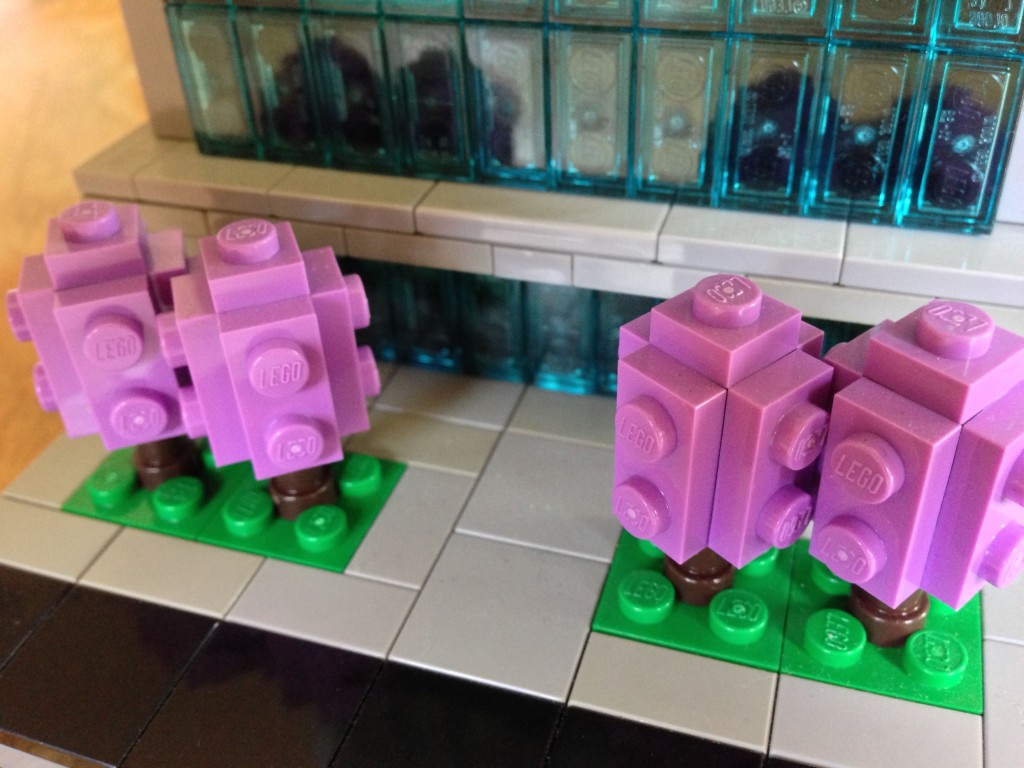
Last week I built trees with cheese slopes. This week I’d like to explore the wonders of the humble plate. Builders often fear the stud, but studded surfaces provide visual texture that evokes the organic and we can make that work for us building landscapes.
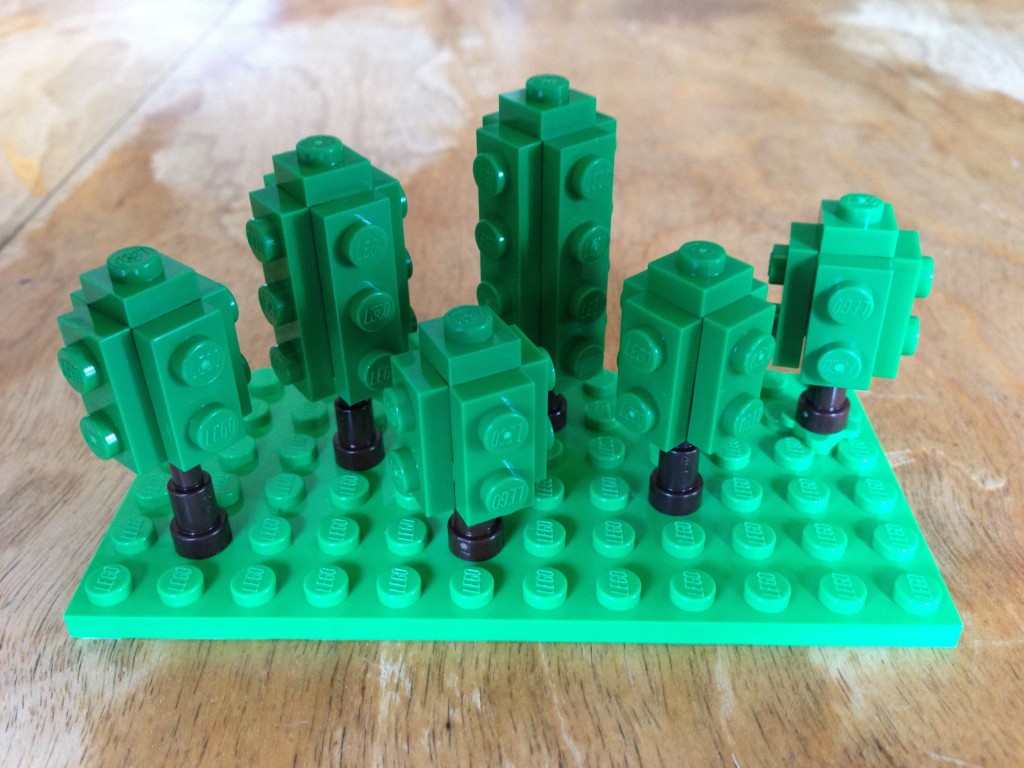
Here are some simple trees built with small plates arranged around a travis brick and mounted on telescopes. The studded plates make a nice approximation for the shaggy texture of deciduous trees at this scale. Simple adjustments give trees of varying heights, which can then be clustered to give convincingly natural growth.
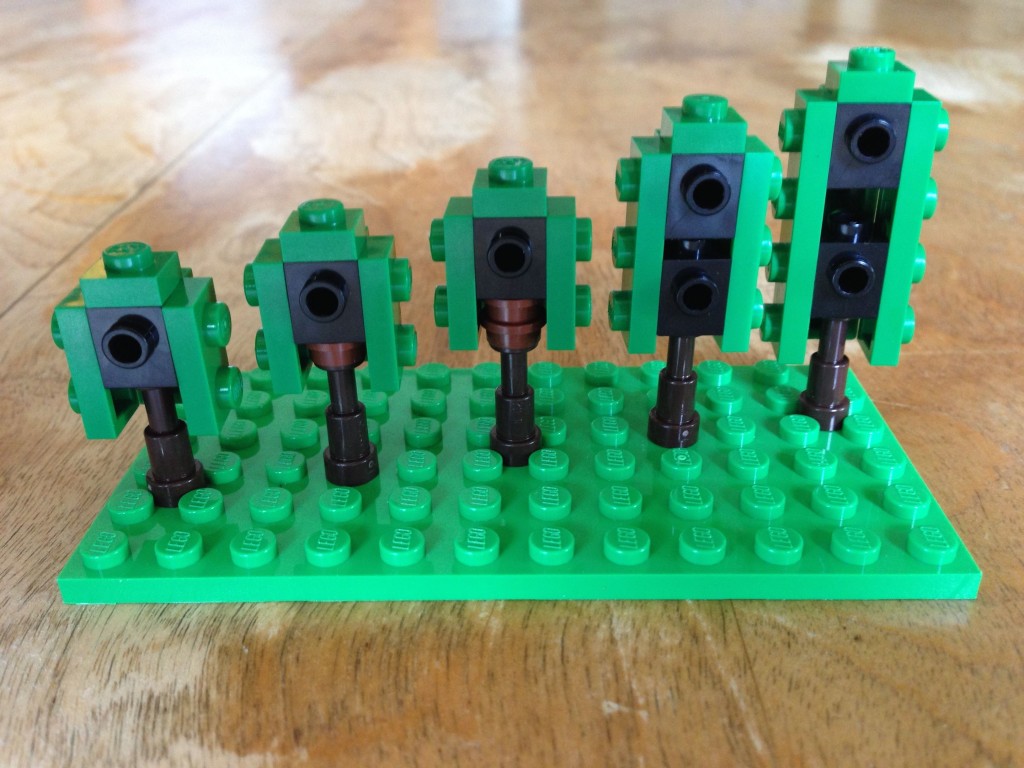
Here you can see how spacers (here I’ve used 1×1 round plates, but any 1×1 plate would do) to adjust the tree’s height. The two trees on the right feature a pair of travis bricks and longer side plates to create tall, thin foliage. I’m using black travis bricks because they are easy to get on the Pick-a-Brick wall and the dark color hides any irregularities of construction that might otherwise be apparent if a clashing color was peeking from behind the leafy green plates.
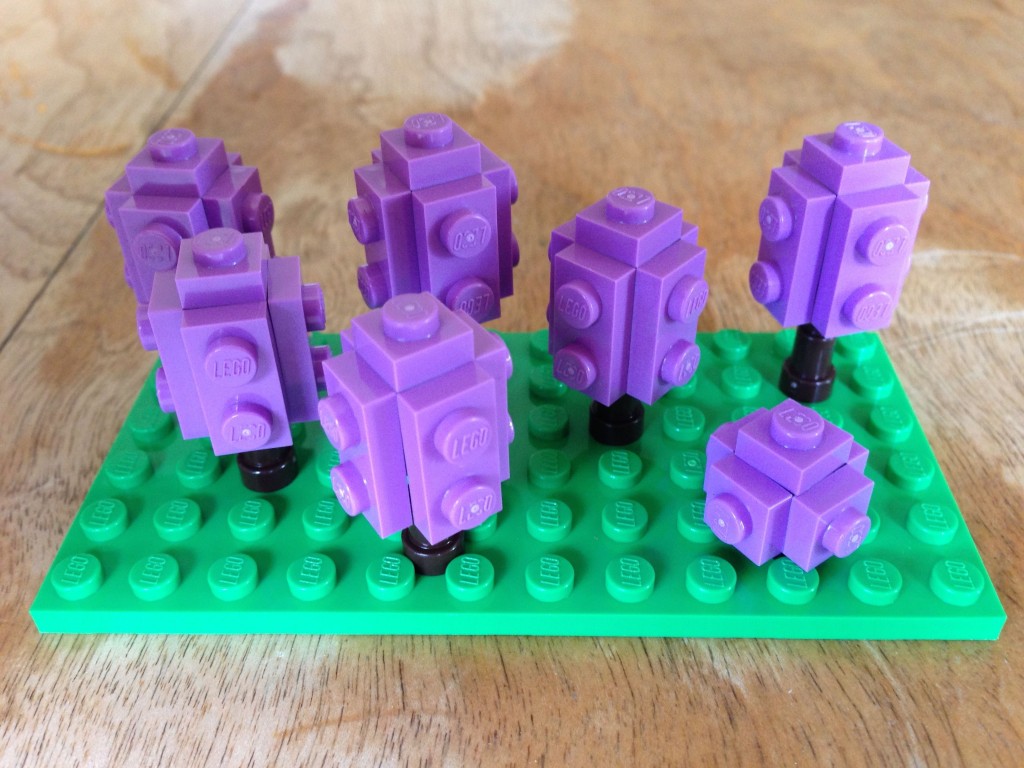
Playing with color gives us very different trees. These medium lavender plates give the appearance of a mass of bright flowers. This color also illustrates one of the reasons that the studded tree works so well. The pattern of studs, though regular, throws shadows and provides highlights that deepen the colors and disrupt what might otherwise be an unnaturally monochrome stand of trees.
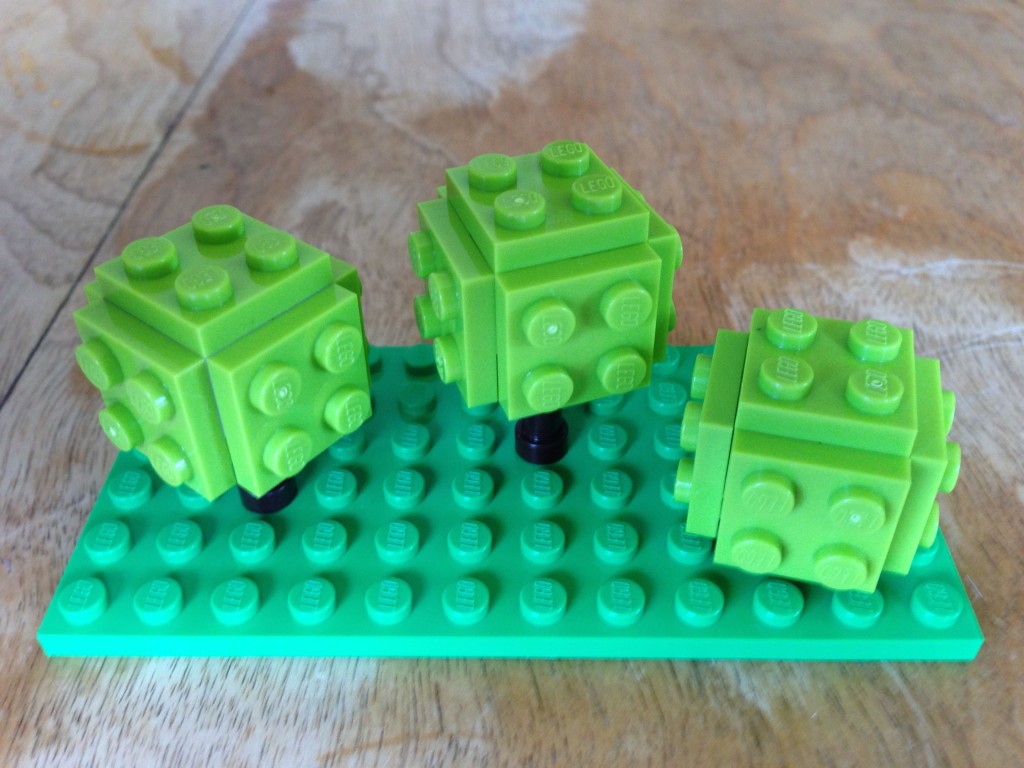
These blockier varieties don’t work quite look the part of woodlands, but they provide a nice variety. I can easily see them as large park trees or part of the landscaping for older urban green spaces.
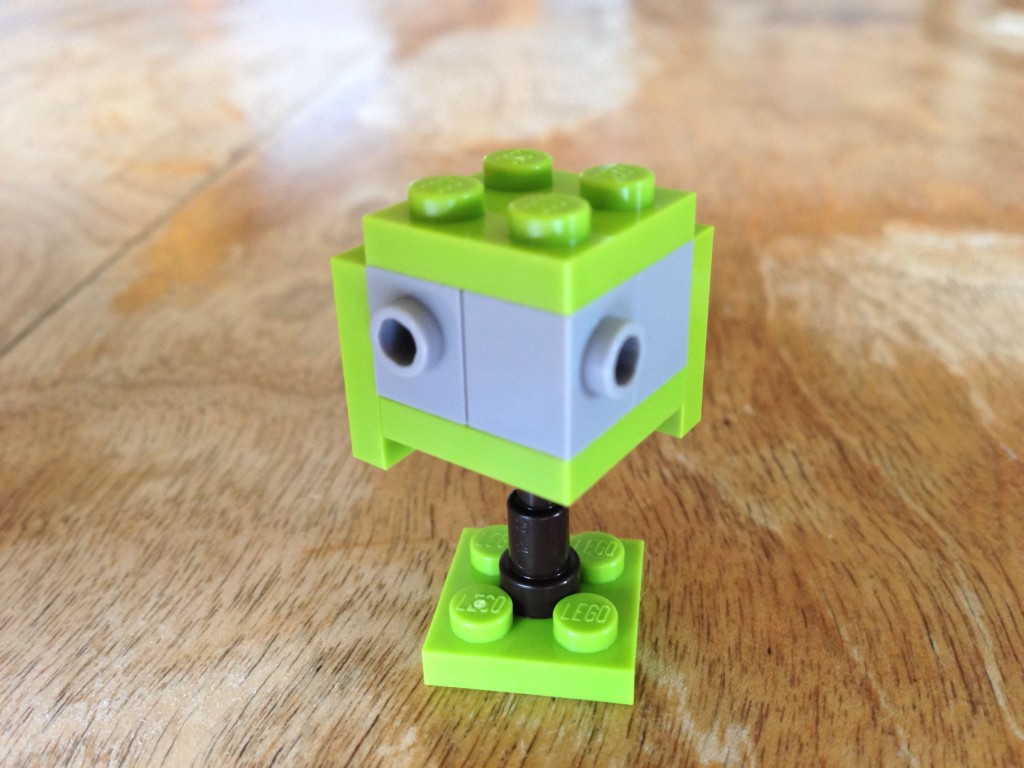
The construction of the blockier trees isn’t quite as elegant, but it still has room for variation and experimentation.
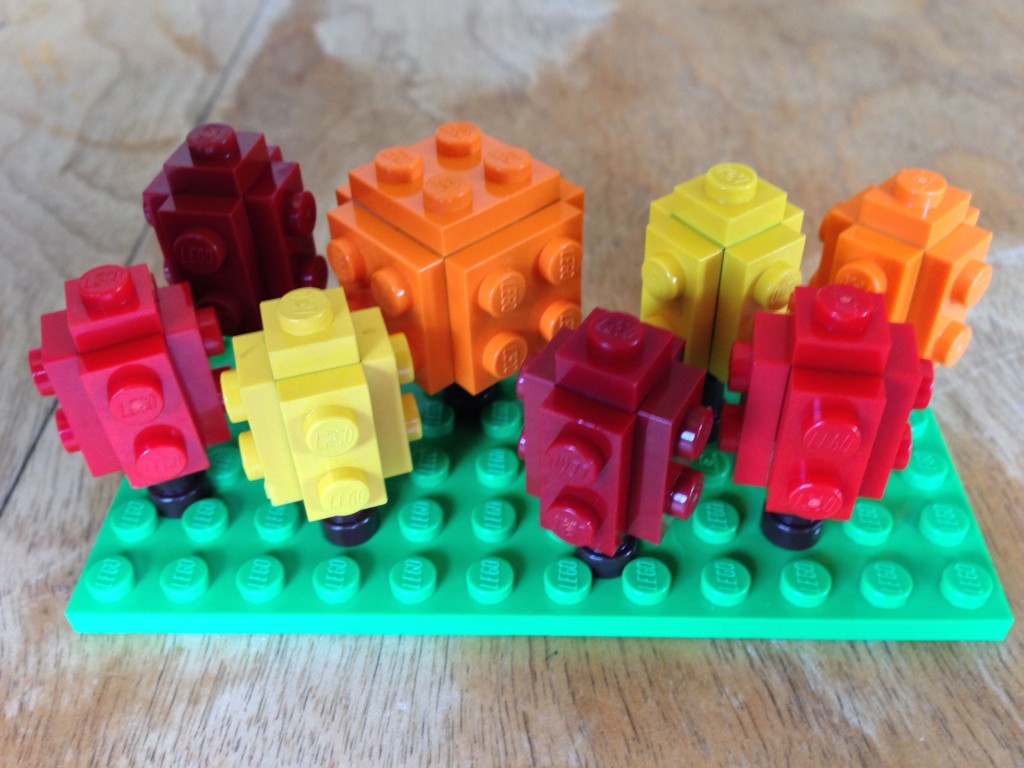
By varying color and size, I can build a stand of trees in fall colors. Ideally, I would landscape the ground too, littering it with matching 1×1 plates to evoke the piles of dead leaves.
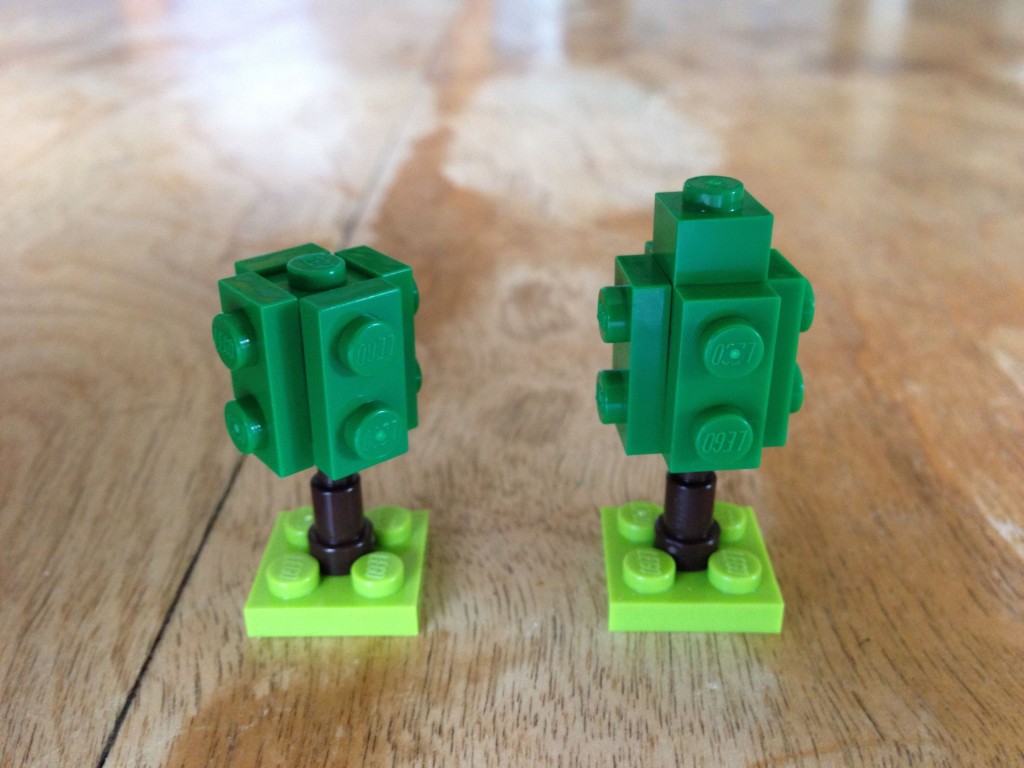
One of the many cool things about the travis brick are the hollow studs. This allows me to connect plates at the post and get a nice variation on the shape. I’m not sold on the tree on the right, but flatter topped tree on the left is lovely.
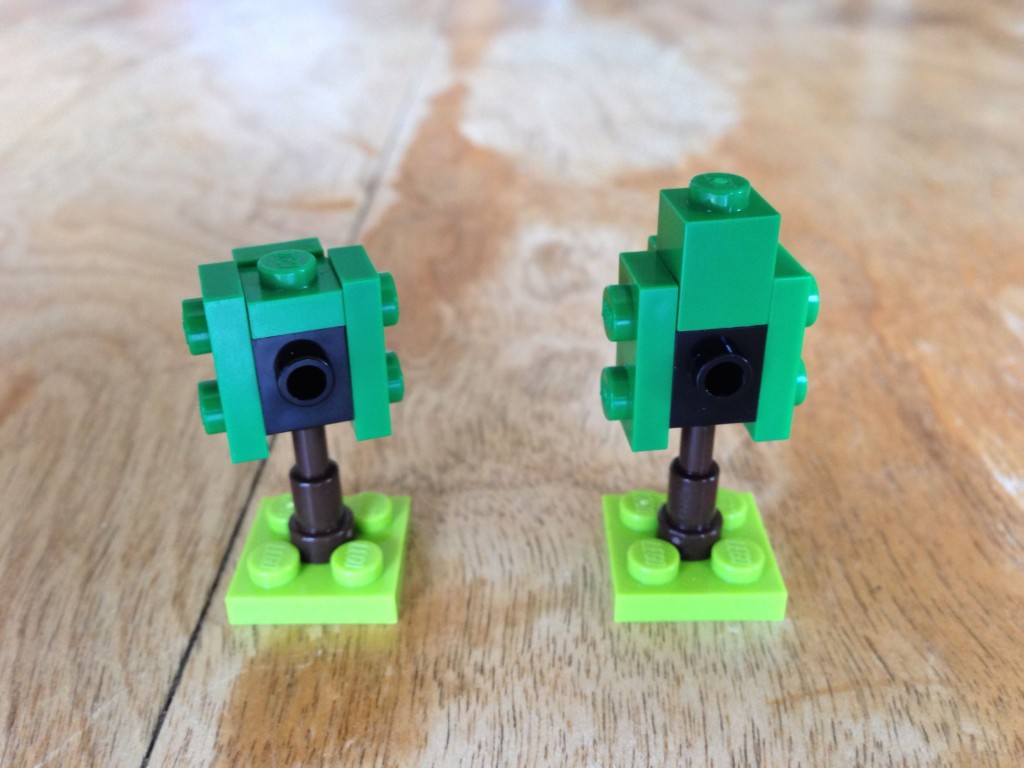
The internal construction is the same on both of these trees, the difference is in how they are topped. The introduction of a brick is very visually disruptive, an ugly break in the visual language of the plates.
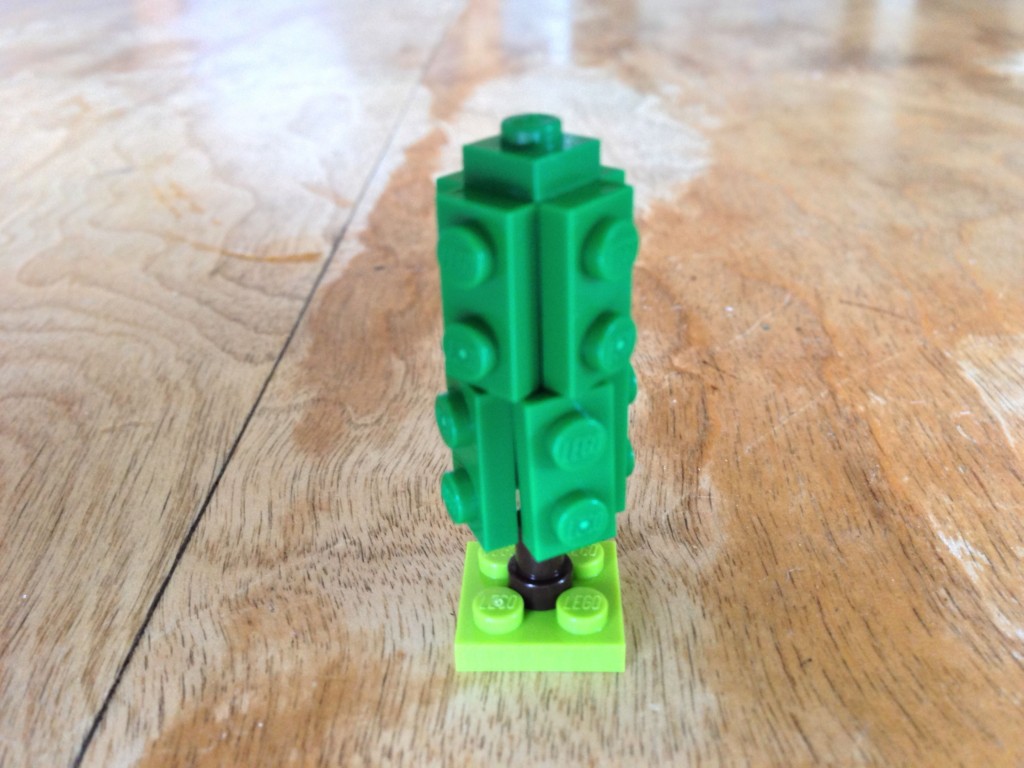
It isn’t hard to stack these trees, creating taller columns of foliage. This is another shape that looks sculpted, but that could be just right for pruned landscape that isn’t too precisely maintained. Stacked elements like this allows a twist to be introduced, otherwise using 1×4 plates might present a more regular shape.
Subtle irregularities can change the metaphor. If I want my trees to look managed and sculpted, I put them together as precisely and regularly as possible. For wilder, more natural trees, I assemble them more sloppily, allowing the elements to lay at small angles to each other. It doesn’t seem like much, but if I am building out a small forest, it helps me create the illusion of the natural.
This inside of this tree isn’t very surprising, a pair of 1×1 plates fill the gap between the travis bricks and provide a pivot for staggering the layers.
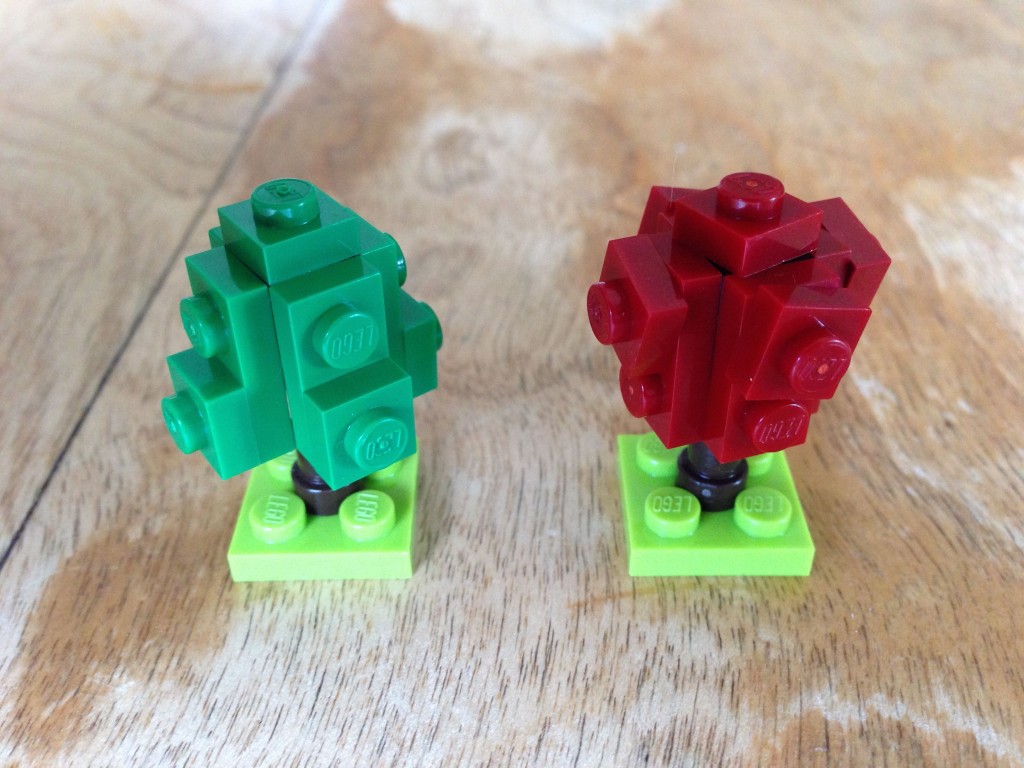
These last trees are experiments in layering the plates. The tree on the left has more of that evergreen shape, but feels more manicures (Christmas tree?) than the happy little trees that I built last week. On the right, I’ve inverted the shape and added a twist to the various 1×1 plates. This has a much more irregular inverted teardrop shape that is growing on me the more I look at it. Both of these variations have some cool potentials.
These simple trees offer a surprising range of variation with a selection of just three or four elements. In some future post, I will explore how many more shapes can be created with the addition of jumper plates and other specialized elements.
Until next time, enjoy, and keep building!
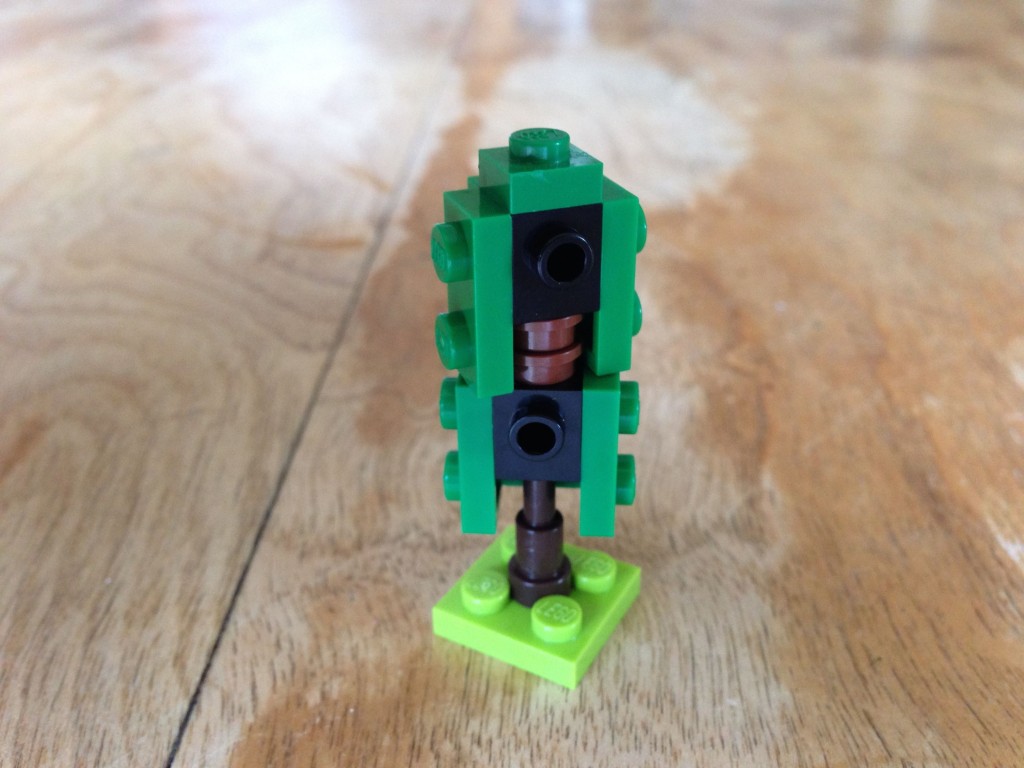
One thought on “Studly Trees”
Comments are closed.